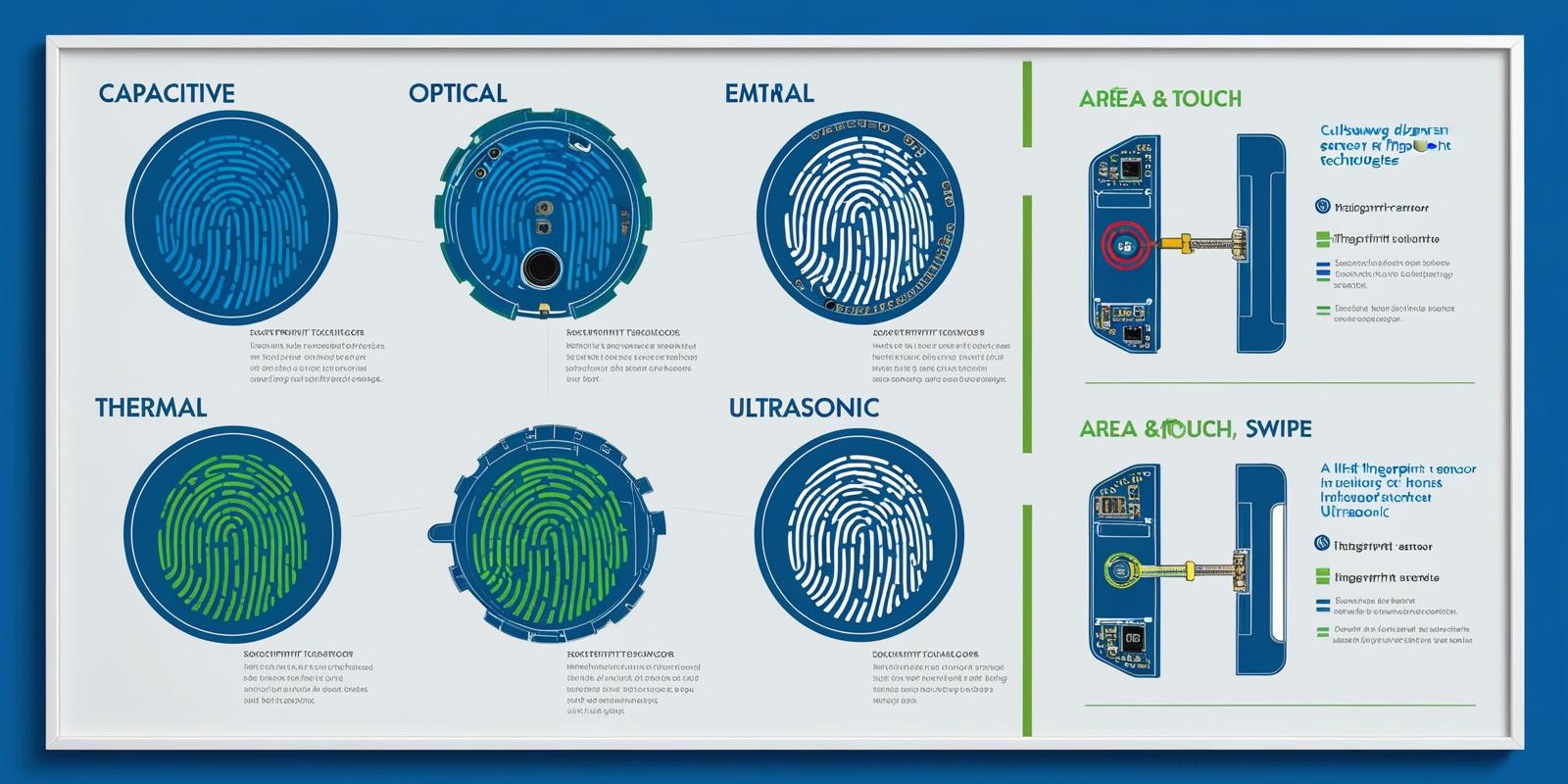The fingerprint sensors market in the Asia-Pacific (APAC) region is witnessing a period of unprecedented growth, driven by rapid digital transformation, increased mobile device penetration, and rising demand for secure biometric authentication across industries. As economies in the region embrace digitization at scale—particularly in finance, government services, and consumer electronics—the demand for reliable, contactless, and seamless identification technologies has positioned fingerprint sensors as a core component of the biometric ecosystem.
The widespread use of smartphones, tablets, and wearables in the Asia-Pacific region has significantly propelled the adoption of fingerprint sensors. With the increasing need for secure, user-friendly authentication, fingerprint scanners have become a standard feature in mid-range and premium devices. Market leaders such as Samsung, Xiaomi, Vivo, Oppo, and Huawei are continuously integrating in-display, capacitive, and ultrasonic fingerprint technologies into their products, offering both security and convenience to consumers.
The trend toward in-display sensors, particularly optical and ultrasonic variants, has gained traction due to rising demand for edge-to-edge screen designs and seamless user experiences. Additionally, wearable devices, smart home gadgets, and laptops are increasingly being equipped with biometric sensors, reflecting the growing consumer expectation for secure and personalized access across digital platforms.
The fingerprint sensor industry is projected to grow from USD 4.2 billion in 2024 and is expected to reach USD 5.9 billion by 2029, growing at a CAGR of 7.0% from 2024 to 2029. The rise in number of identity threats is one of the key factors leading to emergence of fingerprint technologies. Identity theft refers to the illegal acquisition of an individual’s personal or financial details to perpetrate fraud, including unauthorized transactions. It occurs through various methods and inflicts harm on victims’ credit, finances, and reputation.

Asia-Pacific is home to some of the world’s most dynamic digital finance markets. Countries like China, India, Indonesia, and Singapore are witnessing rapid growth in mobile banking, digital wallets, and eKYC (electronic Know Your Customer) systems. Fingerprint authentication plays a key role in securing financial transactions, verifying identities, and enabling frictionless digital onboarding.
Governments and regulatory bodies in the region are encouraging the adoption of biometric-enabled ID verification for banking and public welfare distribution. India’s Aadhaar program, for instance, has integrated fingerprint authentication for identity verification across millions of users, making it one of the largest biometrics-based systems globally. These initiatives continue to drive large-scale demand for high-accuracy fingerprint sensors across public and private sectors.
Beyond mobile and financial applications, fingerprint sensors are increasingly being deployed in security, surveillance, and access control systems across Asia-Pacific. Enterprises and government agencies are adopting fingerprint biometrics for workforce management, time tracking, and physical access to sensitive infrastructure. The move toward touchless or hybrid biometric systems—especially in the wake of health concerns post-pandemic—has further increased the demand for fingerprint solutions integrated with facial recognition and temperature sensing.
In sectors like transportation, healthcare, and education, fingerprint-based access systems are providing scalable and cost-effective security options, particularly in urbanizing regions where secure infrastructure development is a top priority.
The rapid pace of innovation in fingerprint sensor technologies is further fueling the market. Manufacturers are focusing on developing smaller, more efficient, and more accurate sensors. The integration of AI with fingerprint scanning enables advanced capabilities such as liveness detection and spoof resistance, increasing the reliability of these systems in high-security environments.
Flexible and ultra-thin sensors are now being developed for next-gen devices, and the shift toward multi-modal biometrics—combining fingerprint with facial or voice recognition—enhances security layers while maintaining user convenience. As the cost of these technologies continues to decline, their adoption is becoming increasingly viable even for low-cost consumer electronics and small businesses.
With its large, digitally active population and strong government support for biometric initiatives, Asia-Pacific has emerged as a global leader in fingerprint sensor adoption. China remains a dominant market, both as a manufacturing hub and a consumer base for fingerprint-enabled devices. India follows closely with its expanding fintech ecosystem and nationwide biometric programs. Meanwhile, Southeast Asian markets are catching up fast, leveraging mobile-first strategies to drive inclusion and security.
As regional economies continue to recover and digitize, the demand for biometric security will only grow stronger. The fingerprint sensor market in Asia-Pacific is poised to benefit from both policy-driven initiatives and consumer trends that prioritize speed, safety, and identity assurance in an increasingly digital world.
The surge in fingerprint sensor demand across the Asia-Pacific region marks a pivotal shift in how security and identity verification are approached. With widespread applications in consumer electronics, financial services, government programs, and enterprise security, fingerprint biometrics have moved from optional features to critical infrastructure.
As innovations continue to push boundaries and digital-first economies prioritize seamless, secure access, Asia-Pacific is expected to remain a key growth engine for the global fingerprint sensors market for years to come.
Semiconductor and Electronics Market Research Reports
The market is expanding due to rising mobile device penetration, increased use of digital payments, government-backed biometric ID programs, and growing demand for secure authentication across sectors like banking, healthcare, and public infrastructure. Countries such as China, India, and Southeast Asian nations are leading this growth.
Key industries include consumer electronics (especially smartphones), financial services (for eKYC and digital banking), government (for biometric ID and public welfare), healthcare, education, and transportation. Enterprise security and access control systems are also contributing significantly to adoption.
In smartphones, fingerprint sensors are commonly used for device unlocking, app security, and secure payment authentication. In-display sensors (optical and ultrasonic) are especially popular. Wearables use fingerprint sensors for secure health data access, identity verification, and mobile wallet integration.










